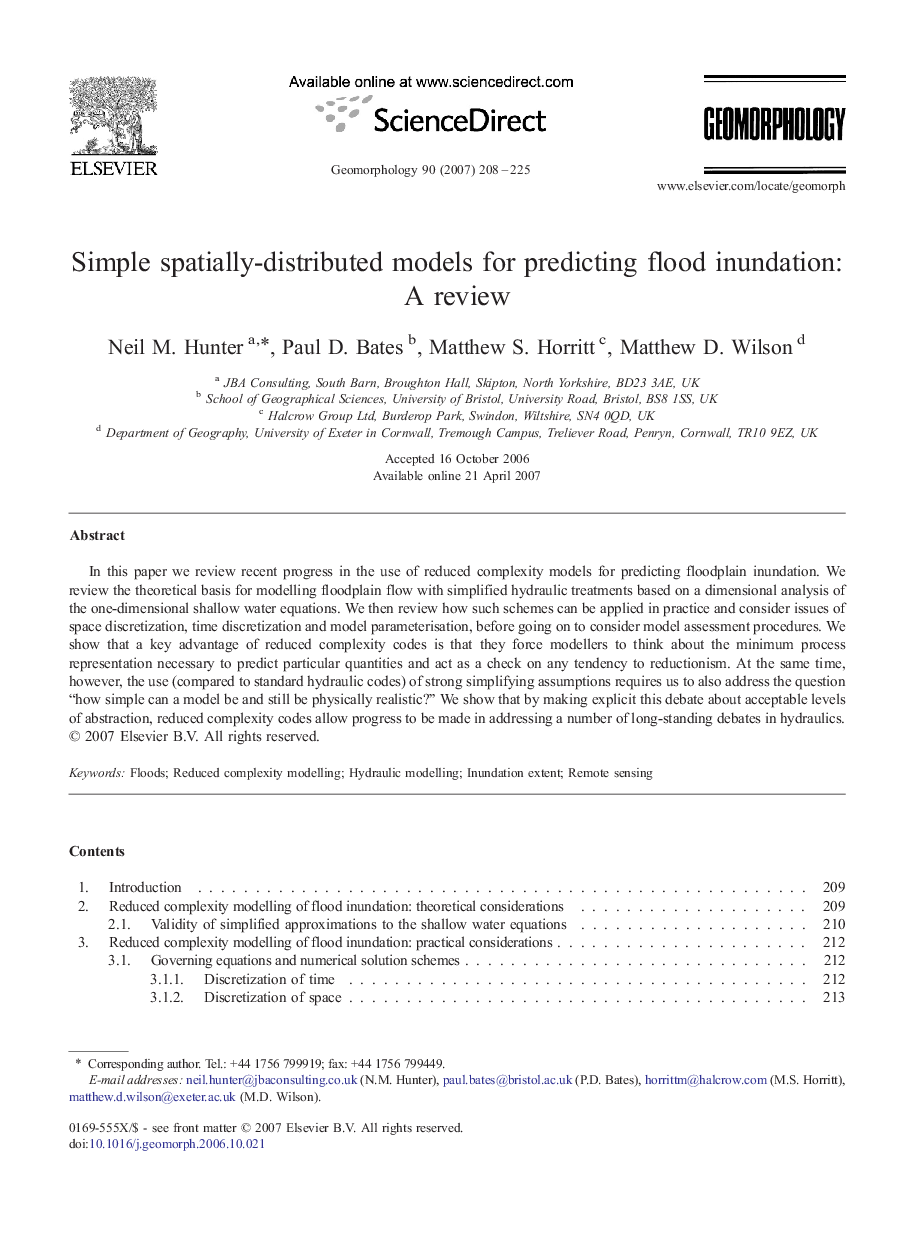| Article ID | Journal | Published Year | Pages | File Type |
|---|---|---|---|---|
| 4687035 | Geomorphology | 2007 | 18 Pages |
In this paper we review recent progress in the use of reduced complexity models for predicting floodplain inundation. We review the theoretical basis for modelling floodplain flow with simplified hydraulic treatments based on a dimensional analysis of the one-dimensional shallow water equations. We then review how such schemes can be applied in practice and consider issues of space discretization, time discretization and model parameterisation, before going on to consider model assessment procedures. We show that a key advantage of reduced complexity codes is that they force modellers to think about the minimum process representation necessary to predict particular quantities and act as a check on any tendency to reductionism. At the same time, however, the use (compared to standard hydraulic codes) of strong simplifying assumptions requires us to also address the question “how simple can a model be and still be physically realistic?” We show that by making explicit this debate about acceptable levels of abstraction, reduced complexity codes allow progress to be made in addressing a number of long-standing debates in hydraulics.
